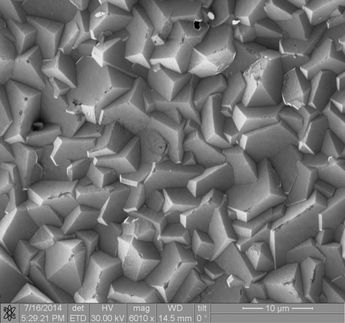Bruker Daltonics Receives Frost & Sullivan Product Innovation Award for Chemical and Biological Agent Detectors
Bruker BioSciences Corporation announced that Frost & Sullivan has selected the Company's Bruker Daltonics subsidiary for their 2004 Product Innovation Award in the Chemical & Biological Agent Detector Markets.
Frost & Sullivan Industry Analyst Matthew Farr stated: "Bruker Daltonics has more than two decades of Nuclear, Biological and Chemical (NBC) detection experience. This experience has led Bruker Daltonics to develop a broad range of NBC detection products based on several technology platforms."
Bruker Daltonics' NBC product line includes a nuclear radiation detector, the hand-held SVG-2, which can be vehicle mounted. The SVG-2 incorporates sensors for detecting gamma and neutron radiation. Bruker Daltonics also produces two complementary biological agent detectors: the Chemical Biological Mass Spectrometer (CBMS) can detect and classify biological agents in as little as three minutes without operator intervention. The CBMS is used in the US Army's Biological Integrated Detections System. The new APSIS(TM) is a fieldable DNA microarray system for the subsequent identification of harmful pathogens.
Frost & Sullivan President Krishna Srinivasan explained: "Bruker Daltonics has expanded the range of products it offers by using new and innovative technologies. Developing these new technologies requires a firm commitment to excellence; Bruker Daltonics has obviously made this commitment to future growth and technological advancement."
Frank Laukien, Ph.D., President and CEO of Bruker Daltonics, commented: "We are gratified by this award, and very pleased to have been recognized by Frost & Sullivan for the fifth time now in three years for our best practices in product line innovation and growth strategy. We expect our NBC product line to continue to make important contributions in U.S. and NATO defense and homeland security applications."
Most read news
Other news from the department research and development
These products might interest you
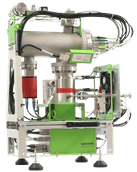
IonTamer ToF MS by Spacetek Technology
IonTamer instruments are time-of-flight residual gas analysers (TOF-RGA) for the analysis of gases
Compact Time-of-flight residual gas analyzer (TOF-RGA) for process analysis

PlasmaQuant MS Elite by Analytik Jena
LC-ICP-MS Is the Key to the World of Elemental Species
Highest Sensitivity and Lowest Detection Limits with PlasmaQuant MS Series and PQ LC
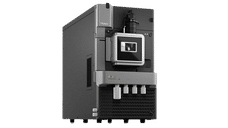
Xevo TQ Absolute by Waters
A new Tandem Quadrupole Mass Spectrometer for Quantification with Absolute power
Absolute performance, efficiency, productivity, and confidence for your most challenging compounds

iCAP RQ single Quadrupole ICP-MS by Thermo Fisher Scientific
Robust ICP-MS with ease of use and high productivity for routine analysis
A complete multi-element analysis solution for your high-throughput routine laboratory
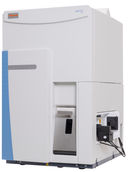
iCAP TQ Triple Quadrupole ICP-MS by Thermo Fisher Scientific
Overcome unexpected interferences, reduce detection limits and improve data quality
Ultralow limits of detection with simplicity - even for the most challenging analytical applications
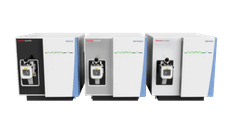
Thermo Scientific TSQ Triple Quadrupole Mass Spectrometry Systems by Thermo Fisher Scientific
Confident quantitation with triple quadrupole LC-MS systems
Mass Spectrometry Systems

TSQ 9610 GC-MS/MS by Thermo Fisher Scientific
TSQ 9610 GC-MS/MS for superb sensitivity and selectivity with outstanding reliable productivity
Eliminate unnecessary, unplanned instrument downtime, save helium and maximize productivity

Get the analytics and lab tech industry in your inbox
By submitting this form you agree that LUMITOS AG will send you the newsletter(s) selected above by email. Your data will not be passed on to third parties. Your data will be stored and processed in accordance with our data protection regulations. LUMITOS may contact you by email for the purpose of advertising or market and opinion surveys. You can revoke your consent at any time without giving reasons to LUMITOS AG, Ernst-Augustin-Str. 2, 12489 Berlin, Germany or by e-mail at revoke@lumitos.com with effect for the future. In addition, each email contains a link to unsubscribe from the corresponding newsletter.
More news from our other portals
See the theme worlds for related content
Topic World Mass Spectrometry
Mass spectrometry enables us to detect and identify molecules and reveal their structure. Whether in chemistry, biochemistry or forensics - mass spectrometry opens up unexpected insights into the composition of our world. Immerse yourself in the fascinating world of mass spectrometry!

Topic World Mass Spectrometry
Mass spectrometry enables us to detect and identify molecules and reveal their structure. Whether in chemistry, biochemistry or forensics - mass spectrometry opens up unexpected insights into the composition of our world. Immerse yourself in the fascinating world of mass spectrometry!
